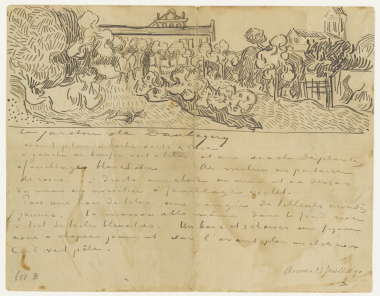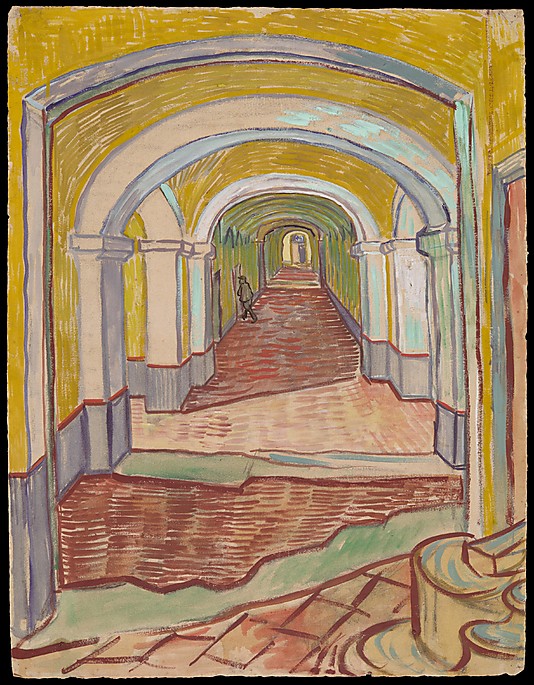It is perhaps not by accident that in this month’s Burlington Magazine an article is published on a new theory about Vincent van Gogh’s death as the anniversary of Vincent’s death happens to be today. An article that refutes a highly controversial theory about the artist’s death and which propels us back to an old established myth.
About a year and a half ago, Steven Naifeh and Gregory White published a voluminous book about Vincent’s life which caused a sensation for claiming that the artist did not, as had always been believed, kill himself, but that he had been murdered by a 15-year-old local boy.

Detail of Vincent van Gogh’s last letter to his brother Theo, 23 July 1890 (courtesy Van Gogh Museum)
In this month’s Burlington Magazine article, two staff members of the Van Gogh Museum, Louis van Tilborgh and Teio Meedendorp, show (among others) that contrary to Naifeh and White’s arguments, the physical evidence proves that the shot fired at Vincent did not come from such a distance as to make it impossible for him to have pulled the trigger. To support their factual findings with proof of Vincent’s state of mind, they point to his last paintings that show increasing anxiety, “extreme loneliness” and “existential fear”. A possible contributing factor could have been Vincent’s anxiety over his brother’s insecure financial future as Theo had plans to open an art gallery of his own rather than having a secure but in his mind insufficient income working for Boussod, Valadon & Cie. Vincent talks about “accepting a fate that won’t change any more” in his letters to Theo of that period. This, to the researchers, points to possibly more rational reasons for Vincent’s suicide than is generally thought.
Last year, but after the publication of Naifeh and White’s book, the same Louis van Tilborgh conclusively proved that the painting “Tree Roots” and not “Cornfield with crows” was Vincent’s very last painting. To the Dutch researchers this strangely abstract work harbours a “farewell” message, thus contradicting one of Naifeh and White’s arguments that Vincent did not leave a suicide note. There was one, only it was painted, not written. It made me think of something Vincent had written about another work, a drawing showing roots, in 1882: “I wanted to express something of life’s struggle (…) in those gnarled black roots with their knots.”
For me, it has always been Vincent’s drawing “A corridor in the Asylum”, made a year before his death, that, in its claustrophobic atmosphere, shows the depths of Vincent’s disturbed state of mind. But perhaps not so. Its haunting quality arises in part from the forlorn and empty impression the corridor makes, but in actual fact this has a practical reason: most of the rooms in the Saint Rémy asylum were empty while Vincent was there. He had sent the drawing to Theo to give his brother an impression of his surroundings. Nothing seems what it seems, it seems.
Note:
An excellent annotated edition of Vincent van Gogh’s letters (Dutch and English) is available on the Van Gogh Museum’s website.


